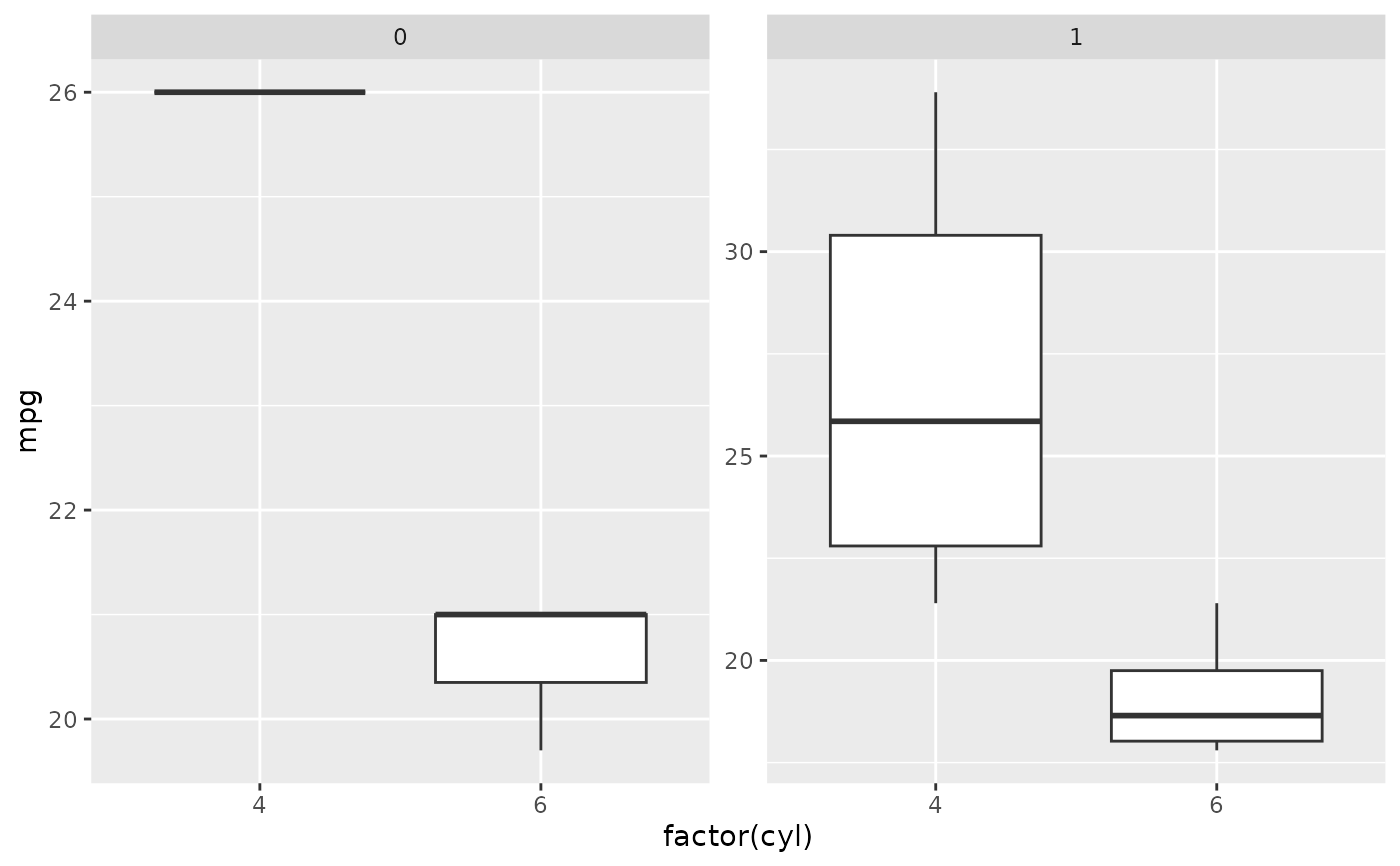This function adds position scales (x and y) of individual panels. These can be used to fine-tune limits, breaks and other scale parameters for individual panels, provided the facet allows free scales.
Details
These scale functions work through the mechanism of the
facetted_pos_scales() function, and the same limitations apply: scale
transformations are applied after stat transformations, and the oob
argument of scales is ignored.
For the expr argument, the expression will be evaluated in the context
of the plot's layout. This is an internal data.frame structure that
isn't normally exposed, so it requires some extra knowledge. For most
facets, the layout describes the panels, with one panel per row. It
typically has COL, ROW and PANEL columns that keep track of what
panel goes where in a grid of cells. In addition, it contains the
facetting variables provided to the facets or rows and cols arguments
of the facets. For example, if we have a plot facetted on the var
variable with the levels A, B and C, as 1 row and 3 columns, we might
target the second B panel with any of these expressions: var == "B",
PANEL == 2 or COL == 2. We can inspect the layout structure by using
ggplot_build(p)$layout$layout, wherein p is a plot.
When using multiple scale_(x/y)_facet(), the expr argument can target
the same panels. In such case, the scales added to the plot first overrule
the scales that were added later.
See also
The facetted_pos_scales() function.
Examples
# A standard plot with continuous scales
p <- ggplot(mtcars, aes(disp, mpg)) +
geom_point() +
facet_wrap(~ cyl, scales = "free")
# Adding a scale for a value for a facetting variable
p + scale_x_facet(cyl == 8, limits = c(200, 600))
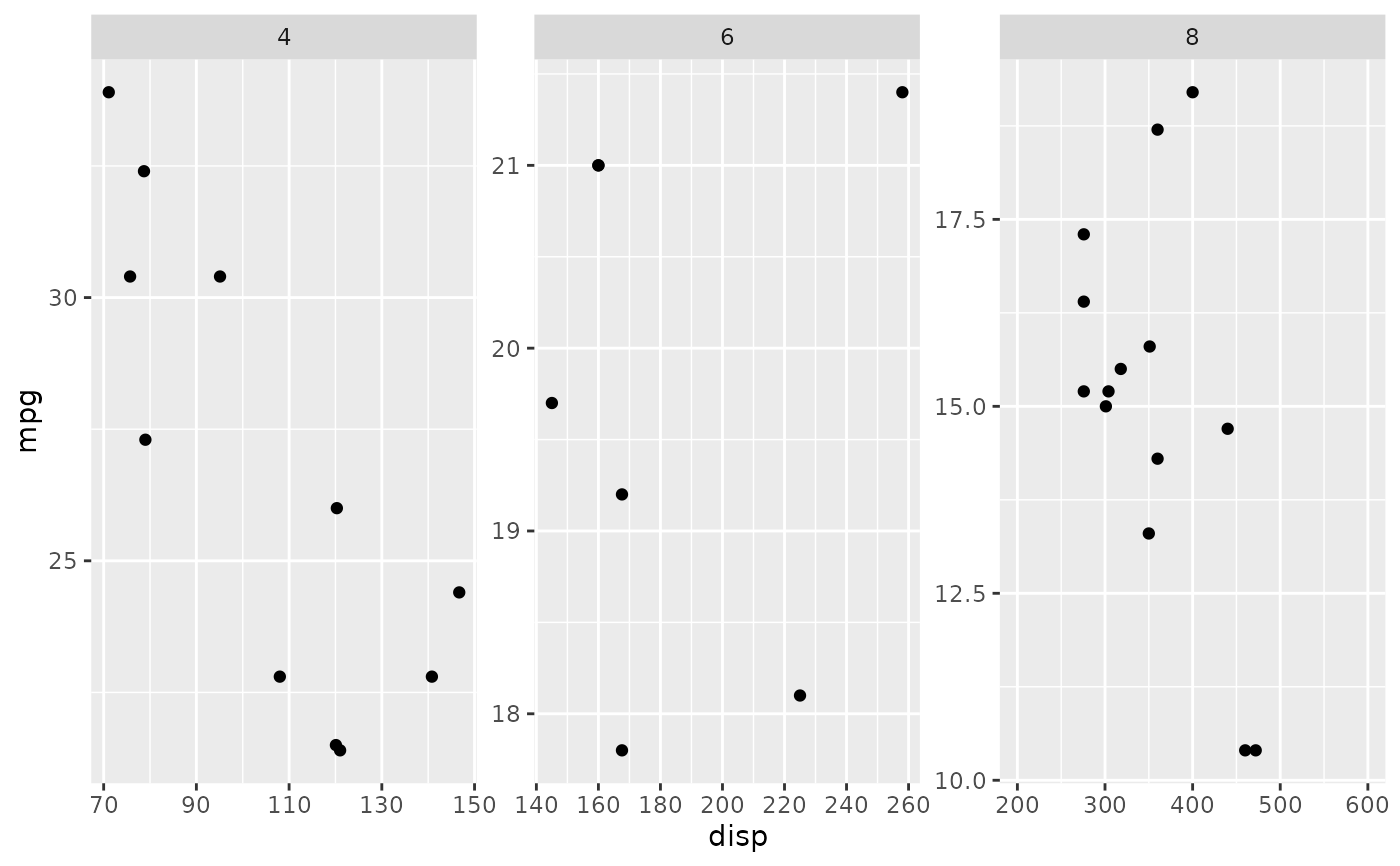 # Adding a scale by position in the layout
p + scale_x_facet(COL == 3, limits = c(200, 600))
# Adding a scale by position in the layout
p + scale_x_facet(COL == 3, limits = c(200, 600))
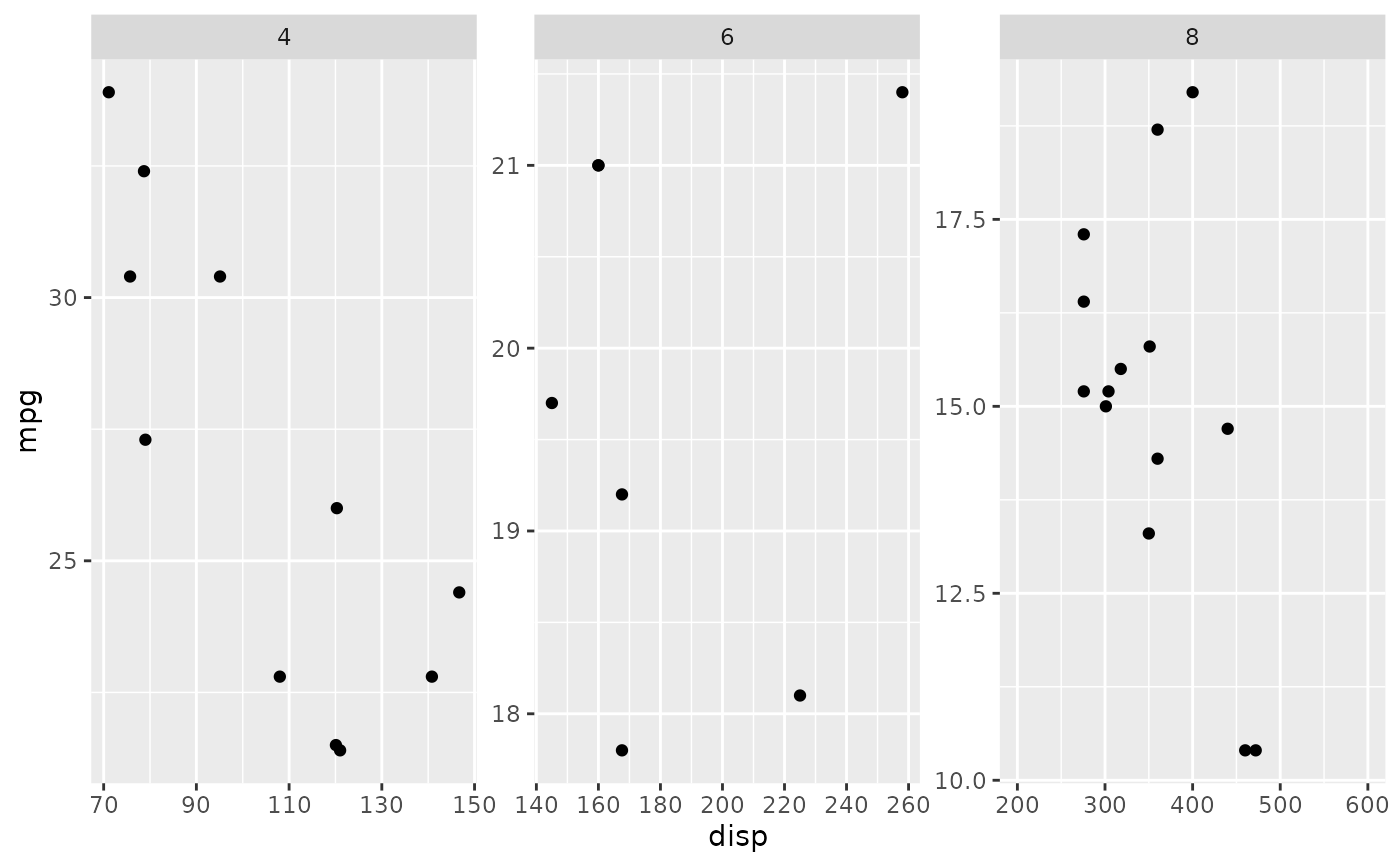 # Setting the default scale and making an exception for one panel
p + scale_y_continuous(limits = c(0, 40)) +
scale_y_facet(PANEL == 1, limits = c(10, 50))
# Setting the default scale and making an exception for one panel
p + scale_y_continuous(limits = c(0, 40)) +
scale_y_facet(PANEL == 1, limits = c(10, 50))
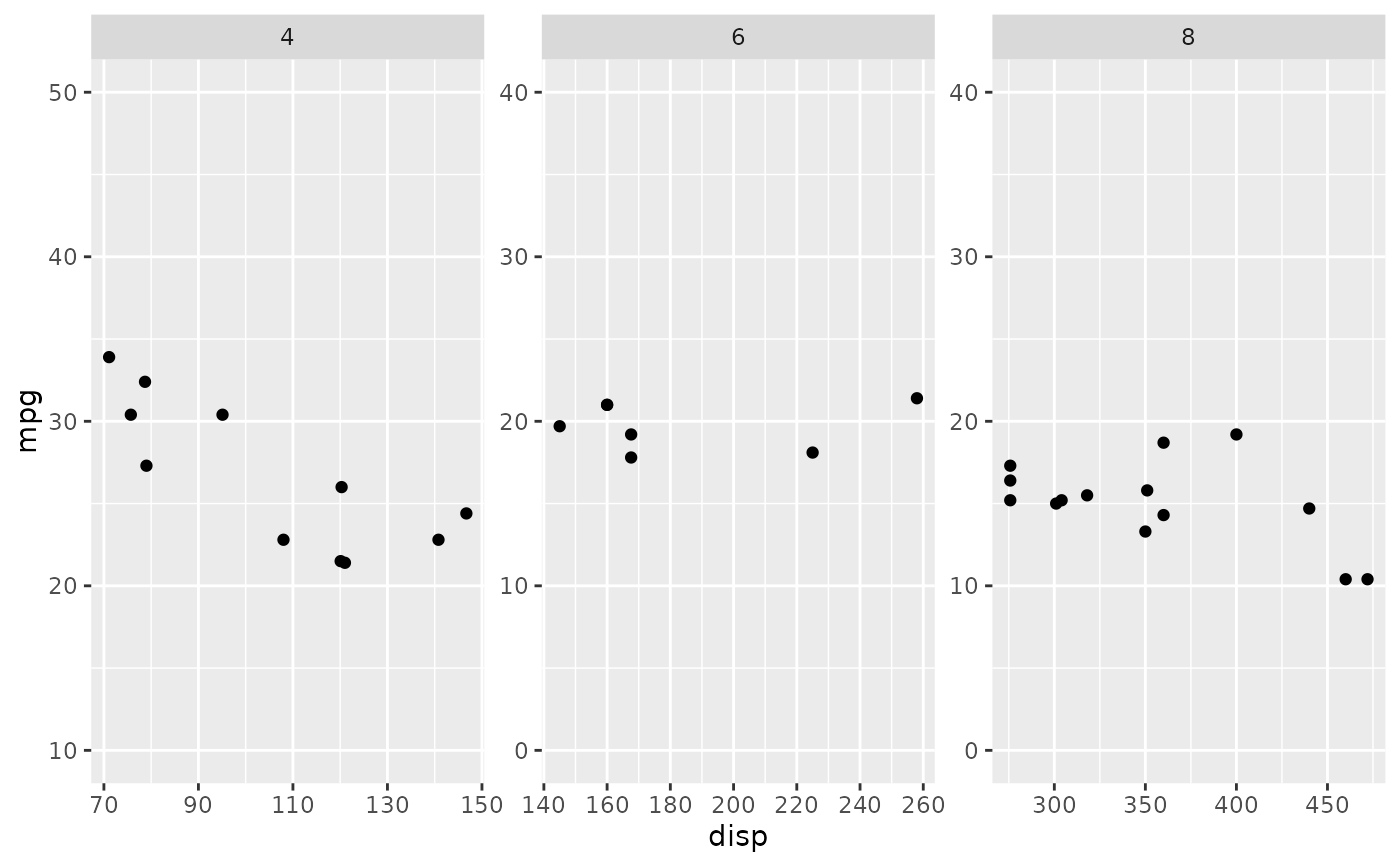 # Using multiple panel-specific scales
p + scale_y_facet(PANEL == 1, limits = c(10, 50)) +
scale_y_facet(cyl == 6, breaks = scales::breaks_width(0.5))
# Using multiple panel-specific scales
p + scale_y_facet(PANEL == 1, limits = c(10, 50)) +
scale_y_facet(cyl == 6, breaks = scales::breaks_width(0.5))
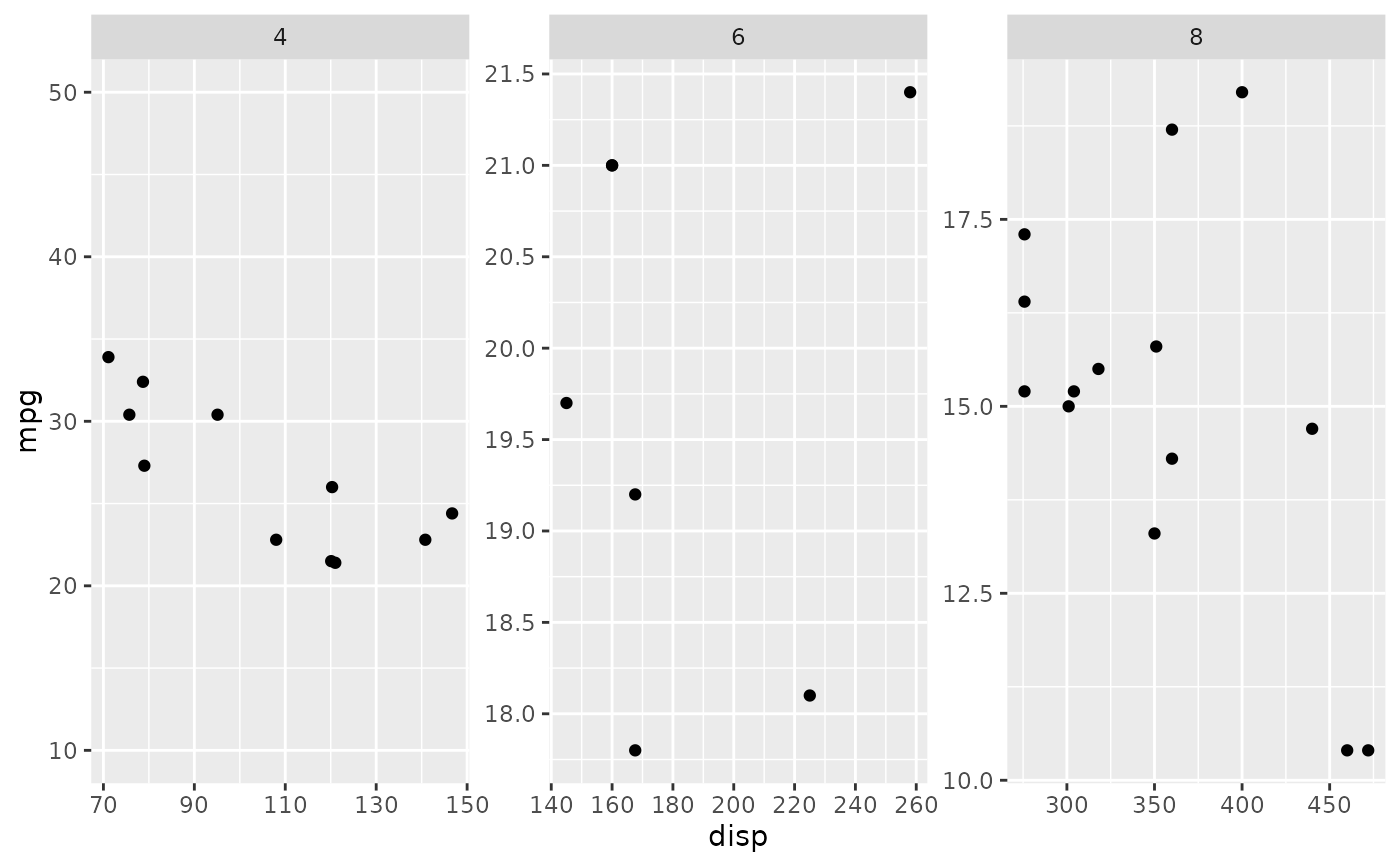 # When multiple scales target the same panel, the scale added first gets
# priority over scales added later.
p + scale_y_facet(COL == 2, limits = c(10, 40)) +
scale_y_facet(cyl %in% c(4, 6), breaks = scales::breaks_width(1))
# When multiple scales target the same panel, the scale added first gets
# priority over scales added later.
p + scale_y_facet(COL == 2, limits = c(10, 40)) +
scale_y_facet(cyl %in% c(4, 6), breaks = scales::breaks_width(1))
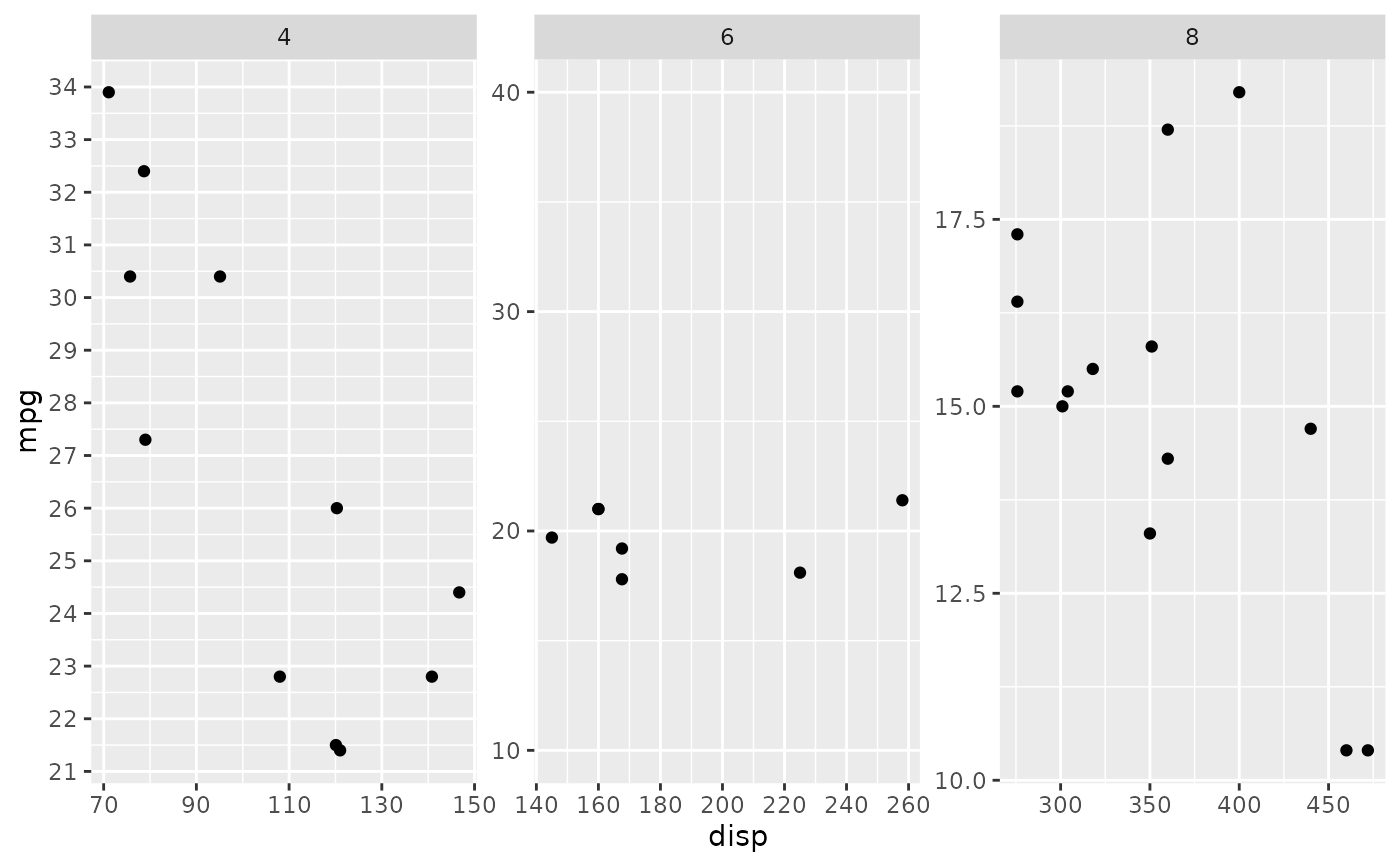 # A standard plot with discrete x scales
p <- ggplot(mtcars, aes(factor(cyl), mpg)) +
geom_boxplot() +
facet_wrap(~ vs, scales = "free")
# Expanding limits to show every level
p + scale_x_facet(vs == 1, limits = factor(c(4, 6, 8)), type = "discrete")
# A standard plot with discrete x scales
p <- ggplot(mtcars, aes(factor(cyl), mpg)) +
geom_boxplot() +
facet_wrap(~ vs, scales = "free")
# Expanding limits to show every level
p + scale_x_facet(vs == 1, limits = factor(c(4, 6, 8)), type = "discrete")
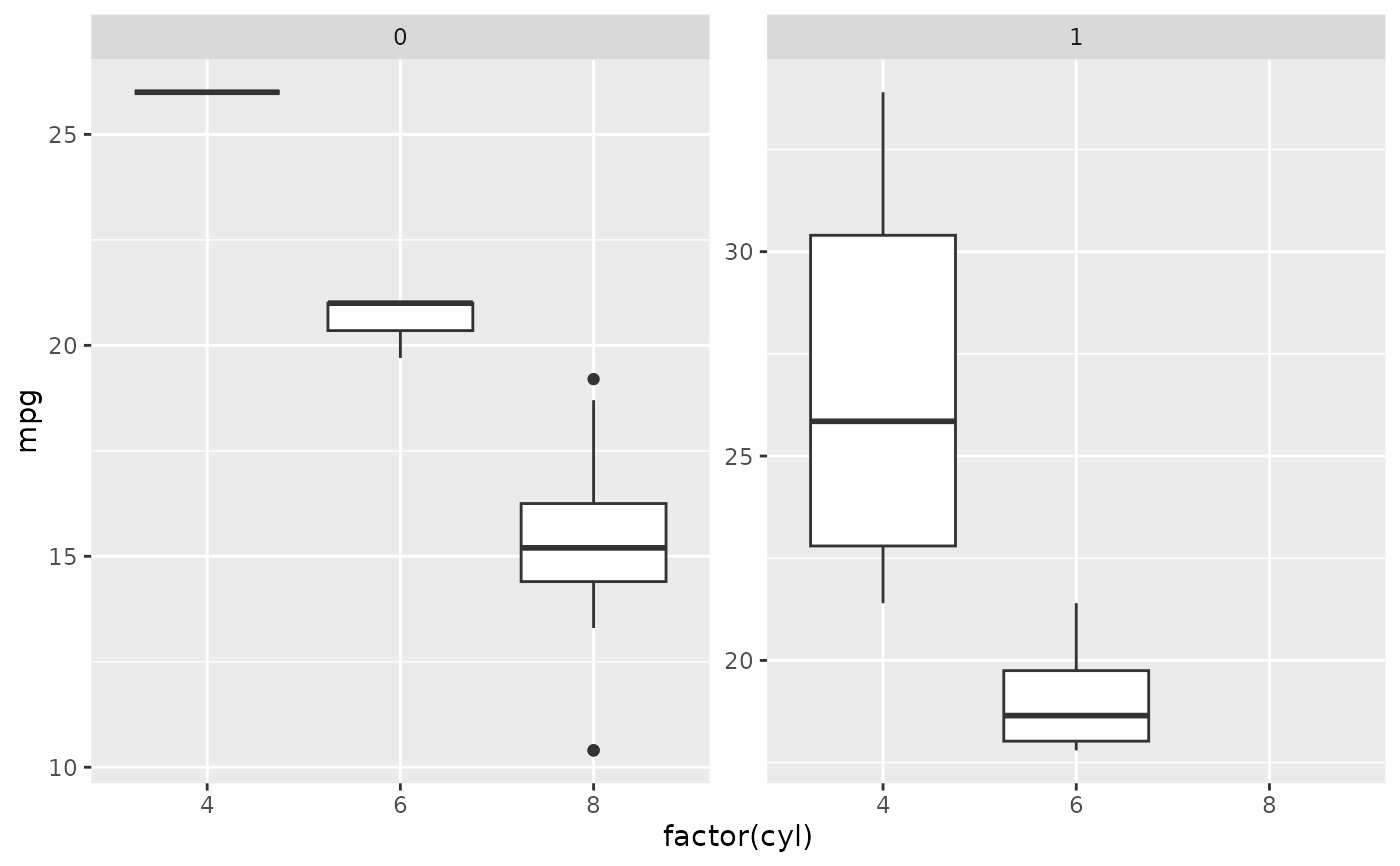 # Shrinking limits to hide a level
p + scale_x_facet(vs == 0, limits = factor(c(4, 6)), type = "discrete")
#> Warning: Removed 14 rows containing missing values or values outside the scale range
#> (`stat_boxplot()`).
# Shrinking limits to hide a level
p + scale_x_facet(vs == 0, limits = factor(c(4, 6)), type = "discrete")
#> Warning: Removed 14 rows containing missing values or values outside the scale range
#> (`stat_boxplot()`).
